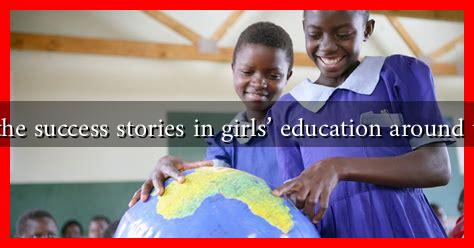-
Table of Contents
- Success Stories in Girls’ Education Around the World
- The Global Landscape of Girls’ Education
- Case Study: The Malala Fund
- Innovative Approaches: Educate Girls in India
- Government Initiatives: The Case of Bangladesh
- Global Partnerships: The Global Partnership for Education (GPE)
- Conclusion: The Path Forward
Success Stories in Girls’ Education Around the World
Education is a fundamental human right, yet millions of girls around the world still face barriers to accessing quality education. However, there are numerous success stories that highlight the transformative power of education for girls. These stories not only inspire but also provide valuable insights into effective strategies for promoting girls’ education globally.
The Global Landscape of Girls’ Education
According to UNESCO, over 130 million girls worldwide are out of school. However, initiatives aimed at improving girls’ education have shown remarkable success in various regions. These success stories demonstrate that with the right support, girls can overcome obstacles and achieve their educational goals.
Case Study: The Malala Fund
One of the most prominent advocates for girls’ education is Malala Yousafzai, who survived an assassination attempt by the Taliban for her activism. Through the Malala Fund, she has worked tirelessly to promote education for girls in regions where access is limited. The fund has:
- Supported over 1.5 million girls in 10 countries.
- Invested in local organizations that provide education and vocational training.
- Advocated for policy changes to ensure girls’ right to education.
The impact of the Malala Fund is evident in countries like Pakistan and Nigeria, where girls are increasingly enrolling in schools and pursuing higher education.
Innovative Approaches: Educate Girls in India
In India, the Educate Girls initiative has made significant strides in improving girls’ education in rural areas. This program focuses on:
- Community mobilization to change societal attitudes towards girls’ education.
- Providing quality education through innovative teaching methods.
- Empowering girls through leadership training and life skills development.
As a result, Educate Girls has successfully enrolled over 1 million girls in schools and improved learning outcomes in several states, including Rajasthan and Madhya Pradesh. The program’s success has garnered attention and funding from various international organizations, including the United Nations.
Government Initiatives: The Case of Bangladesh
Bangladesh has made remarkable progress in girls’ education through government initiatives and policies. The country has implemented:
- Free education for girls up to the secondary level.
- Incentives for families to send their daughters to school, such as stipends and scholarships.
- Community-based programs that engage parents and local leaders in promoting girls’ education.
As a result, Bangladesh has achieved gender parity in primary education, with girls now outnumbering boys in secondary schools. This success is a testament to the effectiveness of targeted government policies and community involvement.
Global Partnerships: The Global Partnership for Education (GPE)
The Global Partnership for Education (GPE) is another key player in promoting girls’ education worldwide. By bringing together governments, civil society, and the private sector, GPE has:
- Invested over $5 billion in education programs in developing countries.
- Focused on increasing access to education for marginalized girls.
- Supported countries in developing comprehensive education plans that prioritize gender equality.
Through GPE’s efforts, countries like Ethiopia and Mozambique have seen significant improvements in girls’ enrollment and retention rates in schools.
Conclusion: The Path Forward
The success stories in girls’ education around the world demonstrate that change is possible when communities, governments, and organizations work together. Key takeaways from these initiatives include:
- The importance of community involvement in changing attitudes towards girls’ education.
- The effectiveness of targeted government policies and financial incentives.
- The role of global partnerships in providing resources and support for education initiatives.
As we continue to advocate for girls’ education, it is crucial to learn from these success stories and implement strategies that can be adapted to different cultural and social contexts. By investing in girls’ education, we are not only empowering individuals but also fostering sustainable development and economic growth for entire communities.
For more information on girls’ education initiatives, visit UNESCO’s Girls’ Education page.

